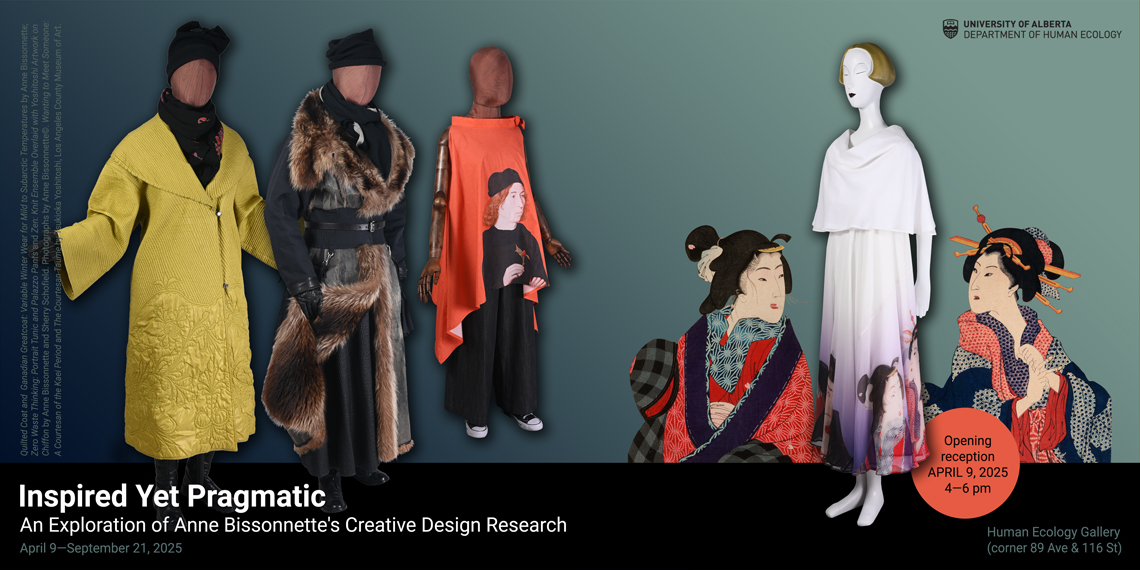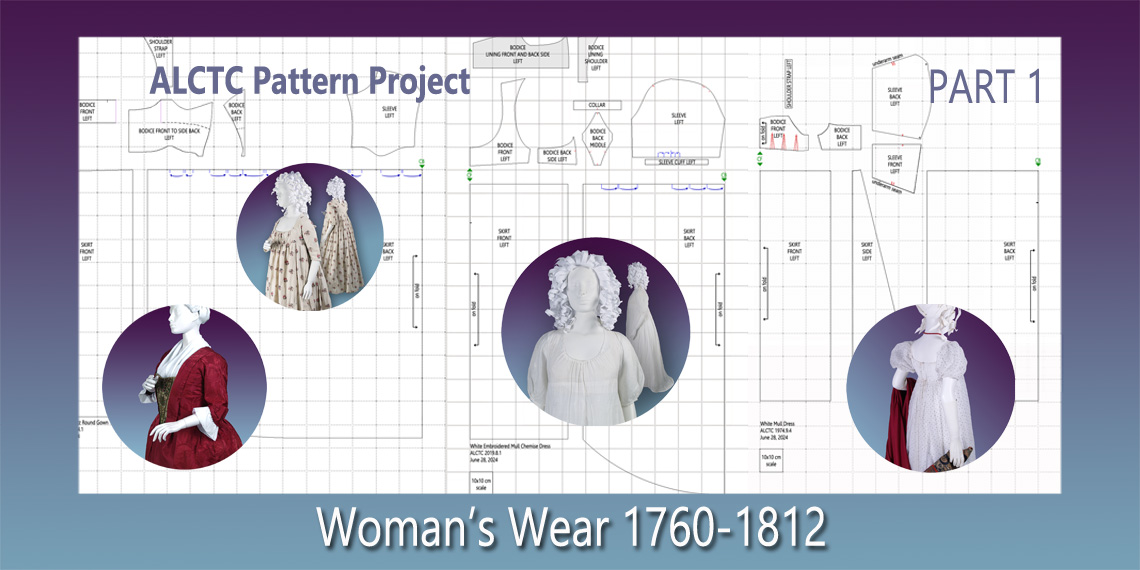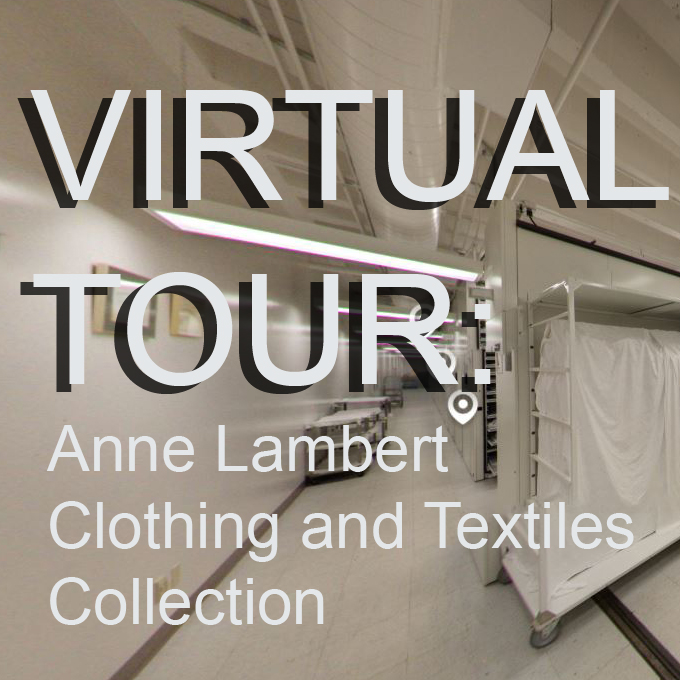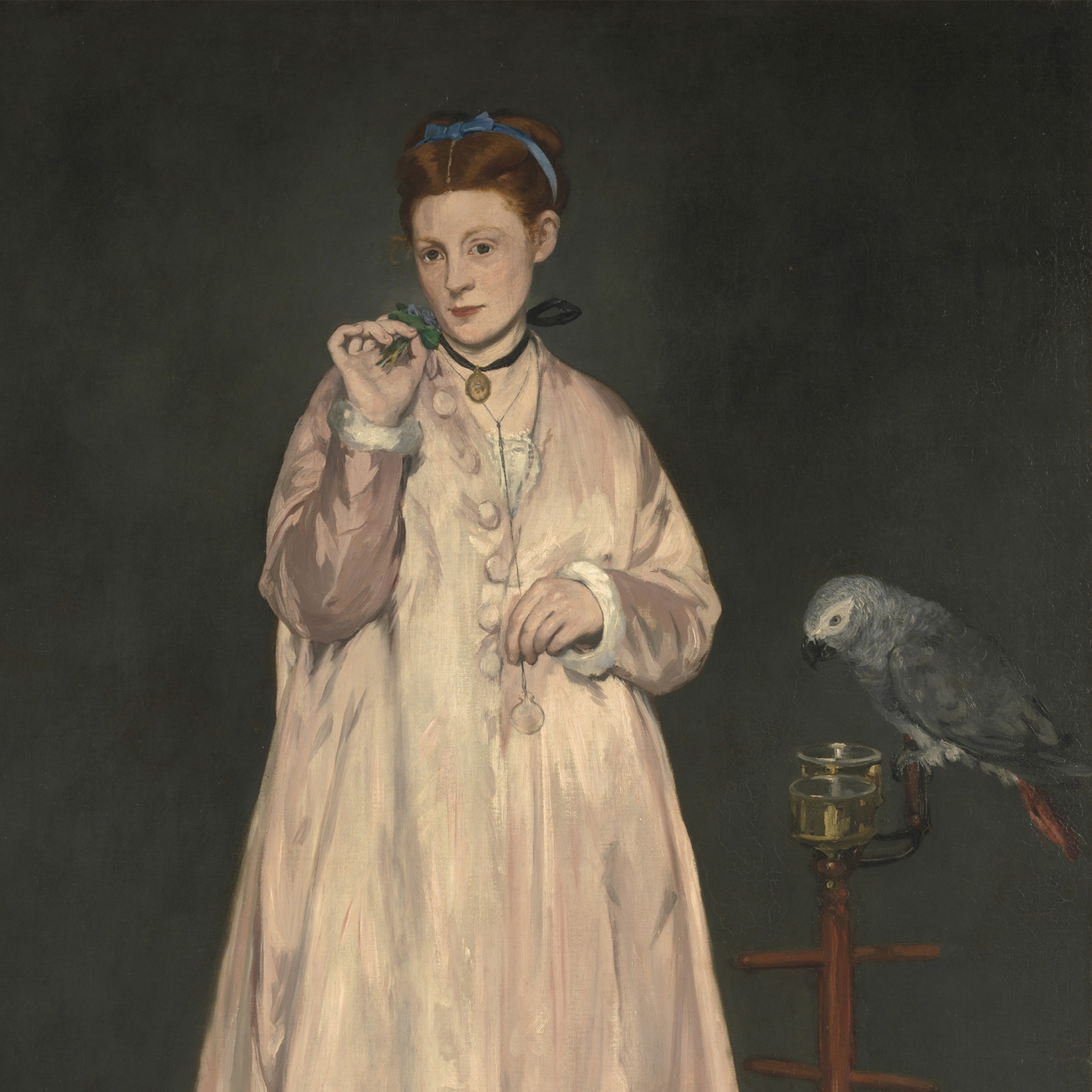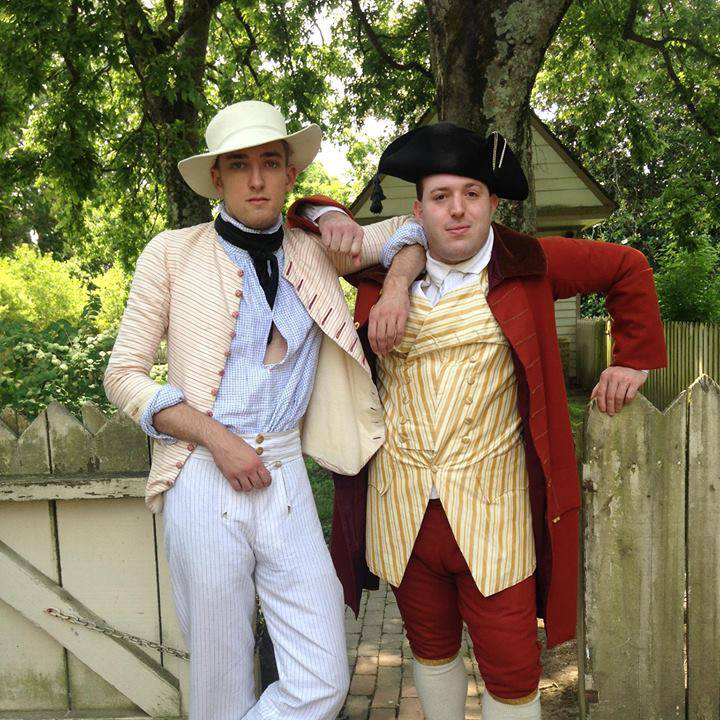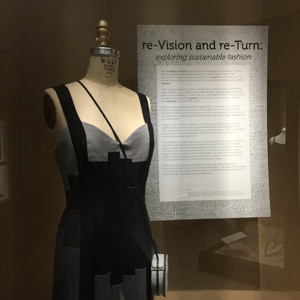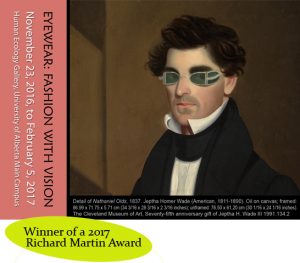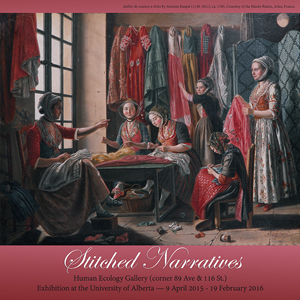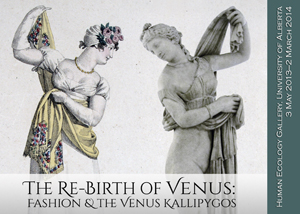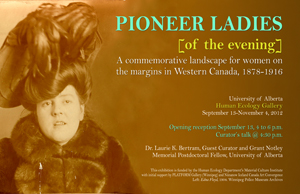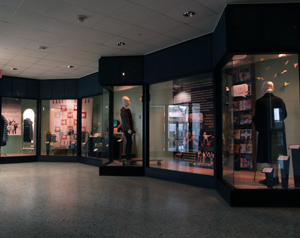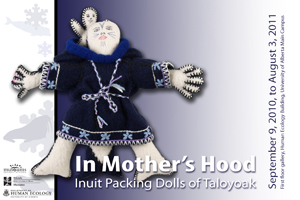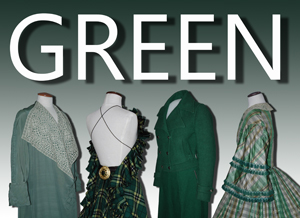The Human Ecology Gallery typically presents one exhibition each year. This exhibition opens in early April. Exhibitions may be organized by faculty members, collection staff and interns, or graduate and undergraduate students. Exhibitions may be the result of individual research or a group effort organized as part of a specific course.
Location: To access the Human Ecology Gallery, please enter via the south entrance of the Human Ecology Building (corner of 116th Street and 89 Avenue).
Hours: during the summer (June 13-August 30) the building is open on Tuesday and Wednesday from 10 a.m. - 2 p.m. The rest of the year, the building is open from Monday to Friday from 9 a.m. - 6:00 p.m.
Call 780-492-4413 for holiday closures.
CURRENT & NEW EXHIBITIONS
Inspired Yet Pragmatic: An Exploration of Anne Bissonnette's Creative Design Research
Human Ecology Gallery
April 9-September 21, 2025
The exhibition is co-curated by Janna Ehrenholz and Dr. Anne Bissonnette.
*
ALCTC Pattern Project: Part 1 – Women’s Wear 1760-1812
Virtual exhibition
Starting June 28, 2024
OTHER VIRTUAL EXHIBITIONS
Virtual Exhibition that opened November 30, 2020
Part 1: Dress Artifacts & Curatorial Practices
PAST EXHIBITIONS
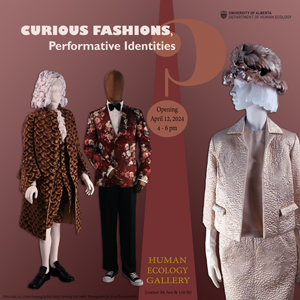
Curious Fashions, Performative Identities
Exhibition in the Human Ecology Gallery
April 12, 2024 - March 21, 2025
The exhibition is co-curated by Dr. Anne Bissonnette and the undergraduate students of the course "Material Culture & Curatorship" (HECOL 368), Isabelle Arden, Alexis Billiones, Janna Ehrenholz, Olivia Nash, Lola Oberhagemann, and Madison Silva.
The exhibition explores the way dress is constantly evolving, yet also linked to the past. Our choices are based on numerous factors, such as dominant styles, societal norms, available goods, and personal preferences. These factors influence how we present ourselves and begin to reveal our identities in various contexts. Curators selected artifacts that often appear odd as they are no longer part of our present customs.
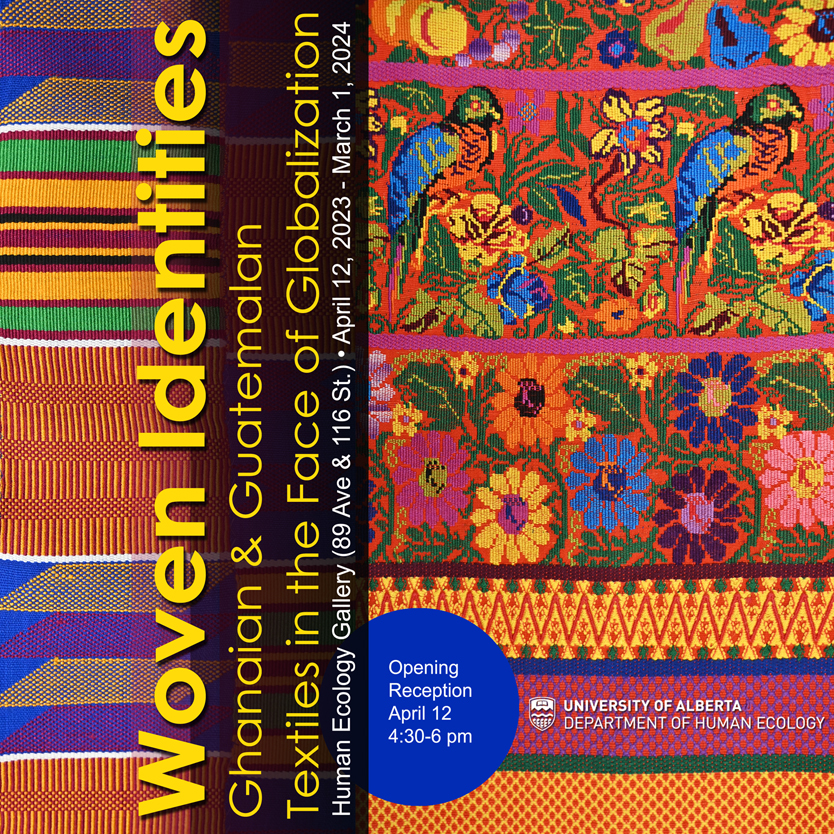
Exhibition in the Human Ecology Gallery
April 12, 2023 - March 1, 2024
Ghana and Guatemala may be on opposite sides of the world, yet their people have long expressed themselves proudly through a similar medium: textiles. Both countries have strong weaving, printing, and embroidering traditions that have generated colourful, intricate textiles recognized worldwide. Ghanaians and the indigenous Maya people of Guatemala have developed woven designs and processes that serve as a distinctive form of cultural expression in an increasingly globalized world.
The exhibition is co-curated by the instructor, Dr. Anne Bissonnette, and the graduate students of the course "Material Culture & Curatorship" (HECOL 668), Siming Guo, PhD, Elsie Osei, MFA, and Chiara Power, BA.
This exhibition received a commendation from the Costume Society of America's Richard Martin Award.
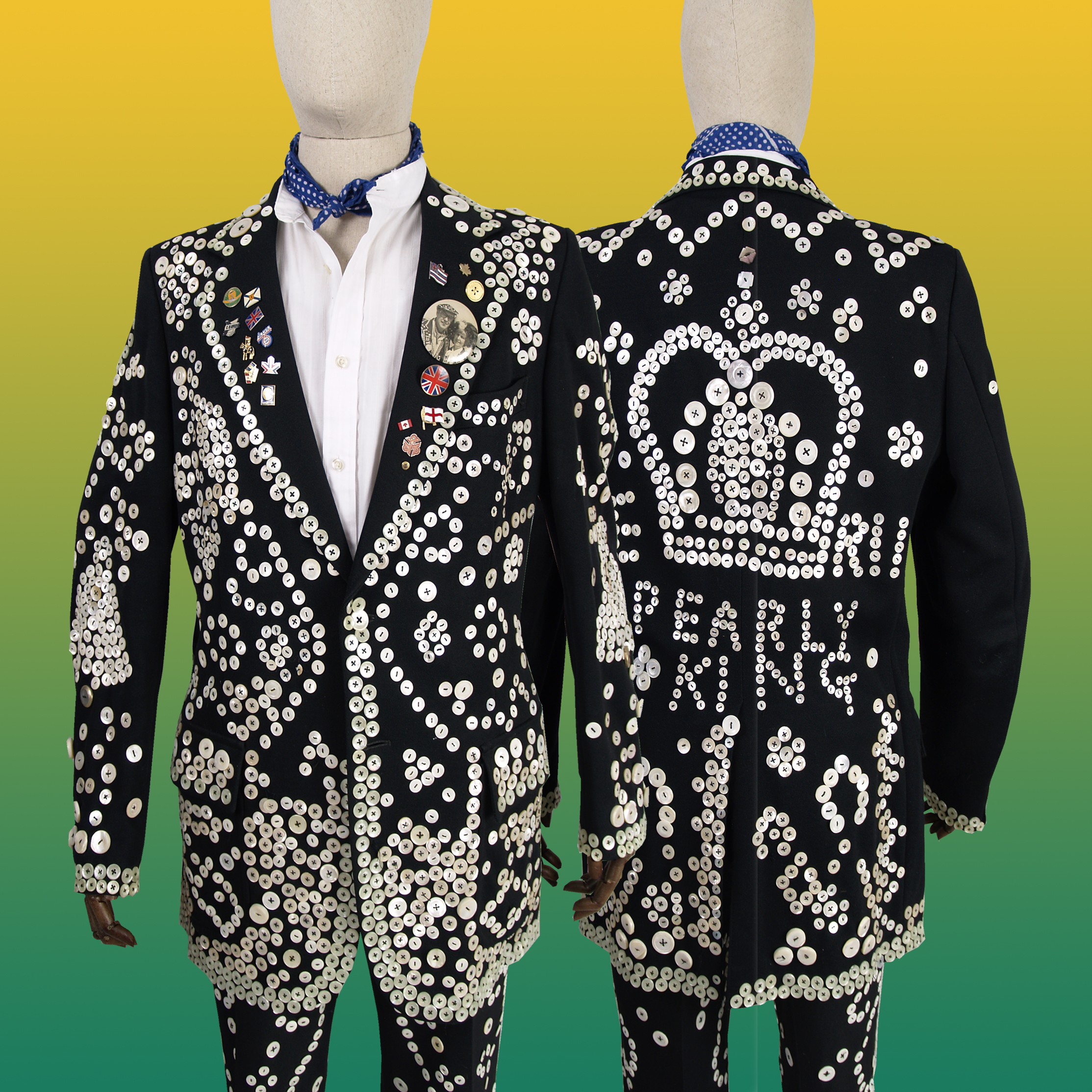
Be My Guest: The Performance of Femininity Through Food & Fashion
9 April to 25 October 2019
The exhibition is co-curated by the instructor, Dr. Anne Bissonnette, and the graduate students of the course "Material Culture & Curatorship" (HECOL 668). From the Victorian front parlour tea, to the modernist living room cocktail party, to formal and informal dining room events, the co-curators explore how women have negotiated their roles as hostesses and guests in numerous ways.
Fashion in Print
28 November 2018 to 8 March 2019
The exhibition was co-curated by the instructor, Dr. Anne Bissonnette, and the undergraduate students of the course HECOL 460 to develop a deeper understanding of dress history in the 19th, 20th, and 21st centuries. The project involved a critical analysis of printed textiles, clothing, and print media from a historical perspective. The exhibition included historical artifacts from eighteenth-century garments to designer clothes by Lanvin and Emilio Pucci.
Re-Vision and Re-Turn: Exploring Sustainable Fashion
14 May 2018 to 23 October 2018
The exhibition was a message and an inspiration from the instructor, Vlada Blinova, and her students from the course "Apparel Design and Product Development II" (HECOL 454). Human Ecology students explored the meaning of sustainability through the upcycling of used or unwanted clothing. Their vision was to create new life for items rescued from second-hand stores and discovered through wardrobe revision. The materials used were chosen for their fabric qualities and/or sentimental value. Dresses, coats, jackets, and reclaimed fabric samples served as the raw material and inspiration for new, one-of-a-kind fashion items. Old pieces were diverted from the landfill, turned into new styles of contemporary clothing and returned to an active life cycle.
Imagining a Better World: The Artwork of Nelly Toll
8 October 2017 to 30 March 2018
Travelling exhibition from the Massillon Museum in Ohio, this project documents how, in 1943, Nelly and her mother hid from the Nazis in the home of a Catholic family in Lwow, Poland. With a watercolour set and her imagination, this young girl triumphed over adversity by writing stories and illustrating what she imagined a normal life could be. The exhibition gives a voice to a child who not only survived those terror-filled days, but has thrived as an adult and has given back to the world. Nelly’s artwork reminds us that art and hope can bring light to the darkest of situations and prompts discussions on contemporary issues from religious intolerance to current genocides.
Misfits: Bodies, Dress and Sustainability
12 April to 29 September 2017 (extended from Sept. 13, 2017)
The exhibition is co-curated by the instructor, Dr. Anne Bissonnette, and the graduate students in the course "Material Culture & Curatorship" (HECOL 668). They explore how contemporary fashion is based on an unregulated system where ready-made apparel is produced according to sizes arbitrarily determined by manufacturers. For example, in Canada, clothing sizes are not standardized; a size ten from one manufacturer may differ from the size ten of another. This subjective practice is not customer-centric, and can lead to confusion and frustration in the marketplace. The size systems used in commercial garments are based on an amalgamation of dimensions obtained from different body measurements. The communication breakdown between posted garment sizes and people’s expectations affects how people buy, use and keep their clothing. This raises the question: how does the current fit of apparel impact clothing consumption, individual well-being and the environment?
Eyewear: Fashion with Vision
23 November 2016 to 5 February 2017
Co-curated by the instructor, Dr. Anne Bissonnette, and the students of the undergraduate course "Nineteenth, Twentieth and Twenty-first Century Dress in the Western World " (HECOL 460). The exhibition explores how few objects have had as immense a societal and personal impact as eyeglasses. In a fundamental way, this single object can transform individual lives, affect literacy, improve learning and, in doing so, impact entire nations. Changing the face of history with its corrective powers, eyewear is also a highly visible element of dress that is part of the fashion system. In popular culture it continues to be embedded with intellectualism yet is seldom seen in formal portraits, on television, in film or in fashion exhibitions. Worn by billions of people daily corrective and protective eyewear can be used symbolically for a range of personalities from conservative to assertive. Functional, decorative and rich in meaning, this unique object holds tremendous power and promise.
This exhibition is the first student exhibition to ever receive the Costume Society of America's Richard Martin Award.
For Richer or For Poorer: Til Consumption Do Us Part
9 April to 3 October 2016
Co-curated by the instructor, Dr. Julia Petrov, and the students in the course "Material Culture in Home and Community" (HECOL 462). The exhibition traces the rise of consumer culture as reflected in the changes to weddings over the past 100 years. Seven historical vignettes are arranged chronologically beginning with the 1910’s, when an emphasis on simplicity and family was apparent in the way marriages were celebrated. 1920s to the 30s unveiled new traditions, as mass consumer ideals replaced community and cultural practices. The new ‘cult of marriage’ became prevalent in the 1950s which evidenced the normalization of the white wedding. During the 1970s, wedding ideals were transformed for some by countercultural expressions. The 1980s was a decade of luxury obsession and frequent deviation from simplicity and financial prudence. Lastly, the 2000s reveal a significant increase in consumption with the introduction of e-commerce, social media, and reality television’s fascination with the romantic ritual.
Stitched Narratives
9 April 2015 to 19 February 2016
Dr. Anne Bissonnette, Larisa Cheladyn, Stephanie Huolt, Robyn Stobbs and Sarah Woodyard co-curators as part of the graduate course "Material Culture and Curatorship" (HECOL 668). The exhibition explores how stitched objects communicate powerful ideas to those who understand a needle’s language. Though they speak differently than words on a page, seamstresses’ and embroiderers’ creations are rich in cultural, historical, and social meaning. “Stitched Narratives” explores these modes of expression, unraveling hand sewing’s complex stories. From eighteenth-century gowns and quilted textiles that speak of a highly organized and skilled labour force to twentieth-century garments that link the present to the past to remember a journey of immigration, the exhibition tells woven tales and showcases the hand’s many talents.
Lois Hole, the Queen of Hugs
23 October 2014 to 22 March 2015
Vlada Blinova and Lori Moran co-curators, with the help of Kim vanderHelm, Darlene Briere-Noren, Jane Batcheller, Karen Fraser, Colleen Nissen, Kathy Frazer and Rebecca Blakey. The exhibition is dedicated to the life and legacy of Lois Hole (January 30, 1929 – January 6, 2005). A recipient of numerous honours and awards, gardening expert and successful businesswoman, best-selling author and education advocate, giver of hugs and high-ranking public official, Lois Hole was one of Alberta’s most beloved citizens. Well-recognized for her roles as Lieutenant Governor of the province and Chancellor of the University of Alberta, Lois Hole was also known and loved for her warm personality. The selection of garments and accessories on display speaks to who Lois Hole truly was: a woman of wide-ranging roles and meaningful experiences. Like her, many outfits are casual and down-to-earth, and reflect a clothing philosophy of practicality and comfort. Lois Hole’s family generously donated her favourite casual and dressy outfits to the Clothing and Textiles Collection, Department of Human Ecology. Items of her clothing, jewelry, and photographs from the Clothing and Textiles Collection featured in the exhibition will enrich visitors’ experiences and help to create a personal connection with the memory of Lois Hole.
The Re-Birth of Venus: Fashion & the Venus Kallipygos
3 May 2013 to 2 March 2014
Anne Bissonnette, PhD, Sarah Nash, and Loretta Yau, exhibition co-curators as part of the course "Material Culture and Curatorship" (HECOL 668). The exhibition studies the influence of the enigmatic Venus Kallipygos statue on fashion. The sculpture is thought to be a 1st century BCE Roman marble copy of a Hellenistic bronze original. Within an ancient context, Greece’s Aphrodite, the goddess of love and beauty, is comparable to the Venus of Roman times. Our artifact is linked to numerous goddess statues yet is quite unique. She wears a chiton — a single piece of cloth joined at the shoulders and belted—that is also rooted in Greek culture. As important as what is worn is how it is worn: the symbiosis between body and clothes resurfaces time-and-time-again and, in many ways, is present with us today.
PIONEER LADIES [of the evening]: A commemorative landscape for women on the margins in Western Canada, 1878-1916
13 September to 4 November 2012
Dr. Laurie K. Bertram, Guest Curator and Grant Notley Memorial Postdoctoral Fellow. This exhibition uses a blend of mug shots and textile artifacts to explore the contributions of women on the margins to Western Canadian history from 1878 to 1916. As part of a larger response to the deaths and disappearances of thousands of impoverished and criminalized women in Western Canada over the past 100 years, Dr. Bertram argues we inherit a vibrant and challenging heritage when women on the margins occupy the centre of our historical attention.
From Invisible 2 Invincible
4 June to 26 August 2012
This exhibit is curated by Jacquie Eales and explores key elements of the GeriActors and Friends' creative process that contribute to well-being: building community, sharing stories, being open and playful in a safe environment, and discovering commonalities between older adults and today's youth.
Waste Not Want Not: Creating Through Recycling
7 September 2011 to 12 March 2012
This exhibition of quilts from the Rosenberg Quilt Collection and contemporary garments designed by Lauren MacDonald from recycled materials, examines the relationships between textile reuse in the Great Depression and textile reuse today.
In Mother’s Hood: Inuit Packing Dolls of Taloyoak
9 September 2010 – 3 August 2011
Anne Bissonnette, PhD, and Christina Williamson, exhibition co-curators, highlight the University of Alberta’s collection of Inuit dolls created by the women of Taloyoak, a tiny hamlet in Nunavut Territory. The exhibit pays tribute to a longstanding tradition of self-sufficiency; in 1974, the women formed a craft cooperative and began using their sewing skills to make distinct collector dolls, to earn money for their families. The tradition continues today.
This exhibition received a commendation from the Costume Society of America's Richard Martin Award.
Green
1 October 2009 to 31 January 2010
Curated by Dr. Anne Bissonnette with input from the students of the course "Survey of History Dress" (HECOL 268), this exhibition examines the many facets of the colour green . Though colours no longer denote status, other signifiers have taken over that pose a serious threat to a sustainable future. While fashion has always come in cycles which have nothing to do with a garment’s obsolescence, the spread of an insatiable thirst for consumption is ever expanding. To quench these desires, quantity is replacing quality. Though clothing remains a basic human need, the exhibition proposes that good design and responsible consumerism may help reverse the tide and create a sustainable world.
ABOUT OUR EXHIBITIONS
Due to the nature of our collection, each exhibition requires a fair amount of work and cannot occur quickly. In addition to the research conducted to understand the artifacts, each piece needs to be examined for stability and conservation treatment may be required in the case of fragile materials. Garments often need to be dressed on three-dimensional forms that do not damage the pieces and have a proper stand for period artifacts. Mannequins made for the display of historical garments are typically padded to the shape of the original wearer and thus require skill and knowledge to be presented properly. As textiles are fragile, they also must be presented under low light levels for a limited amount of time. Photographs are made of each mount, and this material can be presented as a virtual exhibition once the gallery is vacated.
Click to view or download our Access and Exhibition Policy for more information.

